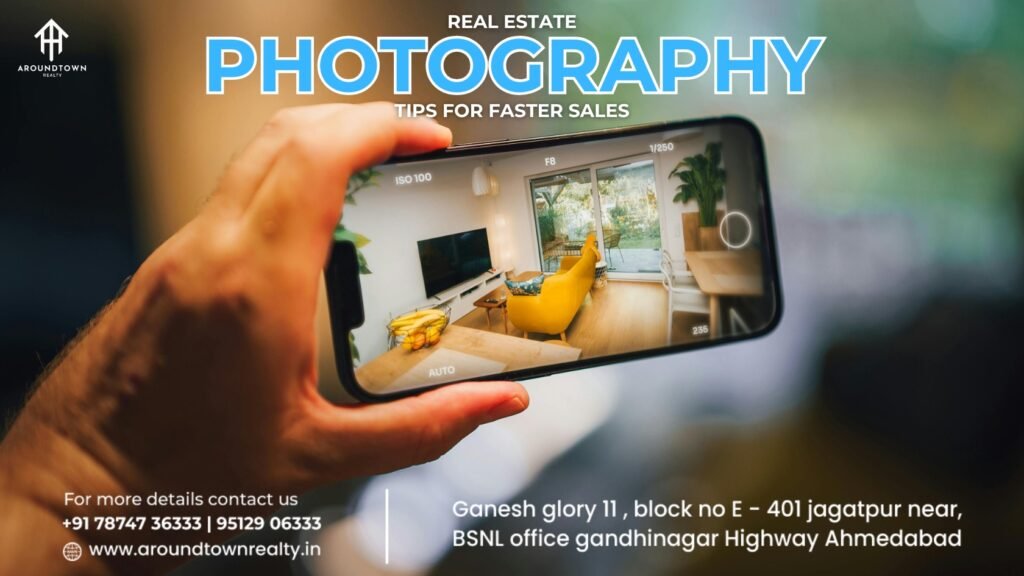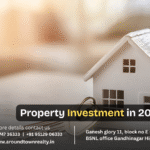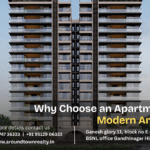In today’s digital-first real estate market, buyers don’t schedule site visits based on descriptions — they’re persuaded by visuals. A well-clicked photo can make a property look aspirational, inviting, and ready to sell. If you’re listing a home, especially in competitive markets like Ahmedabad, real estate photography tips for faster sales can mean the difference between a listing that lingers and one that closes quickly.
In this guide, we’ll walk you through professional real estate photography tips that boost buyer interest, generate more inquiries, and lead to faster conversions.
1. Understand the Psychology Behind Real Estate Photography
Before clicking the shutter, understand what makes property photos effective. You’re not just capturing walls and windows — you’re selling a lifestyle, comfort, and aspiration.
Key psychological drivers include:
- Light = Positivity: Bright, well-lit images create a sense of openness and energy.
- Wide angles = Spaciousness: Larger perceived space attracts families and investors alike.
- Decluttered views = Clarity: Clean visuals help buyers picture their future home.
- Exterior shots = Trust: A good façade shot builds the first impression.
This is why buyers tend to spend 60% of their time on images and only 20% on property details while browsing listings.
2. Use the Right Gear (Without Breaking the Bank)
You don’t always need expensive equipment, but basic quality gear can drastically improve your results.
Recommended Essentials:
- Camera: DSLR (like Canon EOS 90D or Nikon D5600) or a mirrorless camera
- Lens: Wide-angle (10–22mm or 16–35mm) to capture more space
- Tripod: For sharp, stable shots and to shoot in lower light
- Flash/Speedlight: For dark interiors or evening sessions
- Smartphone with Pro Mode: For budget-friendly alternatives
Also, use a remote shutter or timer to avoid camera shake.
3. Perfect Your Lighting Game
Lighting is the backbone of great real estate photos. Natural light works best, but artificial lighting helps balance shadows and highlights.
Lighting Tips for Fast Property Sales:
- Shoot in the daytime (preferably between 10 am–2 pm) for natural light
- Turn on all lights inside the house — ceiling lights, lamps, and under-cabinet lighting
- Avoid mixed lighting (yellow and white together) — it confuses color tones
- Use long exposure when necessary to brighten dark areas
Want glowing windows and visible exteriors in one shot? Use bracketing and HDR editing.
4. Stage the Property Before Shooting
A photo shoot of a messy room doesn’t do justice, no matter how great the camera is.
How to stage a space for real estate photography:
- Declutter surfaces – Remove excess decor, cables, papers, and personal photos
- Add neutral elements – Fresh towels, clean linens, and minimal plants work best
- Arrange furniture to maximize space visibility
- Clean glass, mirrors, and floors – reflections matter
- Ensure consistency – beds made, toilets down, no pet bowls or open cabinets
Remember, staging is visual storytelling. You want the buyer to see themselves living there.
5. Create a Shot List: Every Angle Matters
Before you begin, map out a list of must-click angles for each area. A well-rounded listing includes:
Essential shots to include:
- Exterior – Front and Back (with landscaping, driveway, entry)
- Living Room – From diagonal corners
- Dining Area – With table set and natural light
- Kitchen – Showing appliances, cabinets, and counters
- Master Bedroom – Clean, centered bed with soft lighting
- Other Bedrooms – If small, use doorframe angles
- Bathrooms – From corners to show layout and cleanliness
- Balconies/Terrace – Highlight space and views
- Special features – Pools, study rooms, modular elements
Don’t forget hallways, entrances, and storage spaces — buyers want to see the whole layout.
6. Master Composition and Angles
Your composition tells the story. It decides whether the space looks spacious or crammed, elegant or cluttered.
Composition tips that improve listing performance:
- Shoot from the corners – Maximizes space visibility
- Keep the camera straight – Avoid crooked horizons
- Use the rule of thirds – Balance objects and furniture
- Mind your height – Ideal is 5 feet (eye-level) for interiors
- Shoot slightly wider than what feels natural – it makes the space look bigger
Bad angles can make a beautiful 3BHK look like a dorm room — always preview your shots before moving on.
7. Don’t Skip the Post-Editing Process
Even the best photos can be enhanced with minor post-processing tweaks. Editing refines the light balance, corrects distortion, and removes distractions.
Recommended editing adjustments:
- Brightness & contrast correction
- Color balance and temperature adjustment
- Sharpening and noise reduction
- Lens correction for wide-angle distortion
- HDR blending for windows/light contrasts
Use tools like Adobe Lightroom, Photoshop, or mobile apps like Snapseed if you’re shooting with a phone.
Just avoid over-editing — buyers want authenticity.
8. Shoot a Virtual Walkthrough or 360 Tour (Optional but Powerful)
With increasing online buyers and NRI investors, virtual walkthroughs and 360-degree tours have become decision-making tools.
Why consider video/360s?
- Keeps users on the listing page longer
- Helps buyers explore the home layout
- Improves trust and transparency
- Great for outstation or overseas buyers
Use tools like Matterport, Ricoh Theta, or even smartphone-based gimbal stabilizers to capture smooth walkthroughs.
9. Optimize Images for Faster Online Loading
Once you have the final images, don’t upload them in massive sizes — page load time is a major SEO factor.
How to optimize real estate photos:
- Compress images using TinyPNG or ShortPixel
- Keep the width under 2000px unless for zoomable galleries
- Use descriptive file names: e.g., living-room-bopal-3bhk.jpg
- Add alt text with keywords for SEO: “spacious living room in Bopal, Ahmedabad”
- Group and label by room when uploading to listing platforms
This not only helps faster site load but improves visibility on Google Images, bringing you more organic traffic.
10. What Not to Do in Real Estate Photography
Some common mistakes can ruin otherwise great listings:
- Shooting without cleaning or staging
- Using fisheye lenses that distort reality
- Crooked shots or shadows of the photographer
- Uploading low-resolution or pixelated images
- Capturing open toilets, pets, or personal clutter
Each of these small oversights can instantly turn buyers away — even before they read your property details.
Conclusion: Your Property Deserves to Look Its Best
In a market like Ahmedabad where buyer attention is competitive and digital-first, stunning visuals are not optional — they’re essential.
From staging and lighting to editing and uploading, following these real estate photography tips for faster sales ensures your property stands out, drives more clicks, and ultimately closes faster.
FOR MORE SUCH PROPERTY-RELATED CONTENT, VISIT Around Town Realty
FAQs: Real Estate Photography Tips for Faster Sales
- Can I use a smartphone for real estate photography?
Yes, but ensure it has a good wide-angle lens and Pro Mode. Lighting and composition become even more important in this case. - Should I hire a professional photographer?
If budget allows, yes. Professionals can bring the best out of any space and improve your listing’s online impact significantly. - How many photos should a listing ideally have?
At least 15–20 well-shot images, covering every major room and angle, along with 2–3 exterior shots. - What’s the best time of day to shoot real estate photos?
Midday (10 am–2 pm) is ideal for ample natural light, but golden hour (early morning or late afternoon) works beautifully for exteriors. - Do edited images mislead buyers?
Not if done ethically. Editing should enhance clarity and brightness, not alter the actual size or condition of the property.









